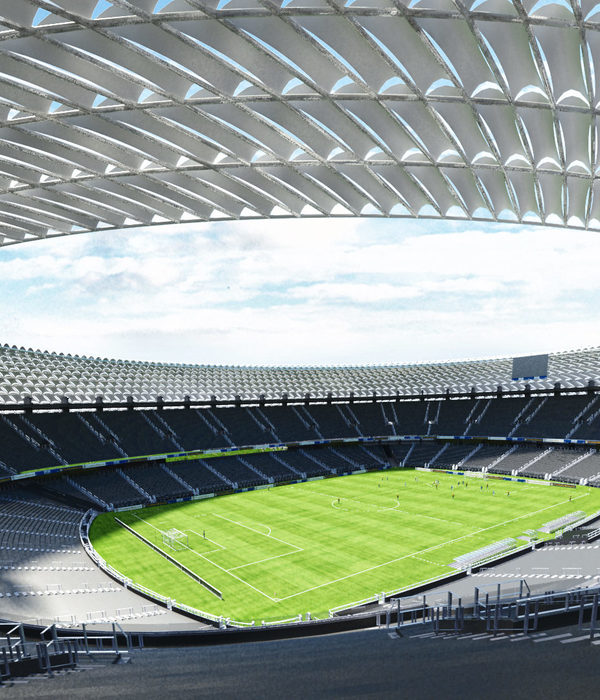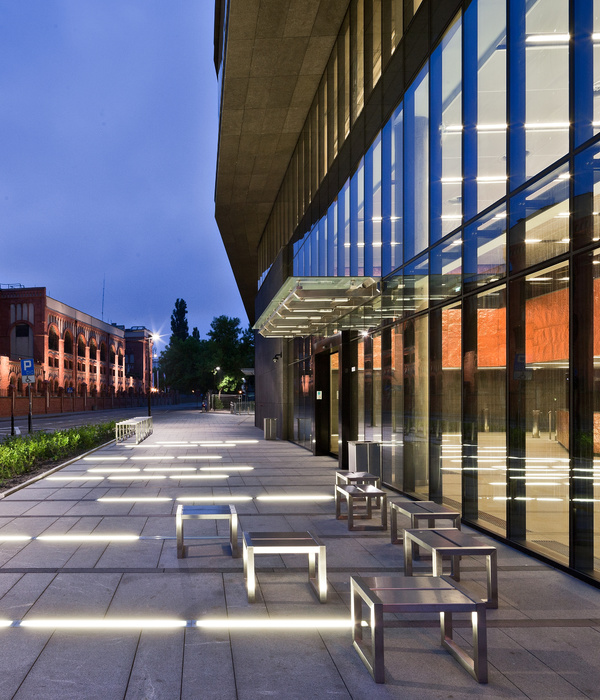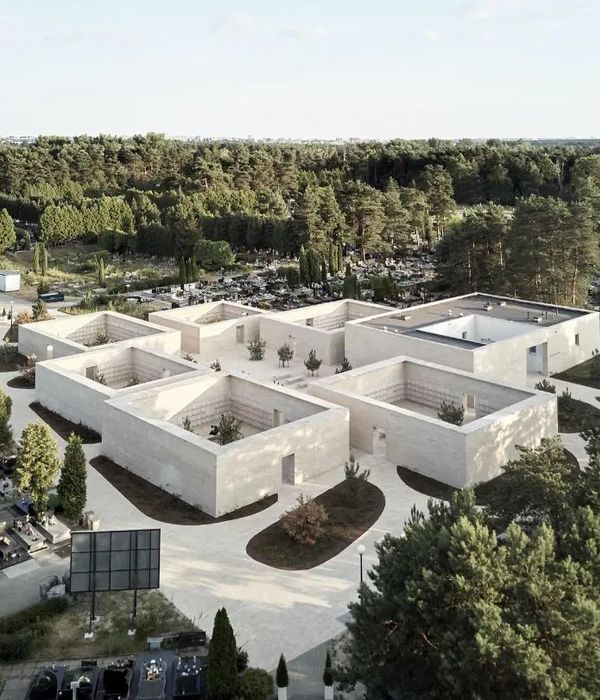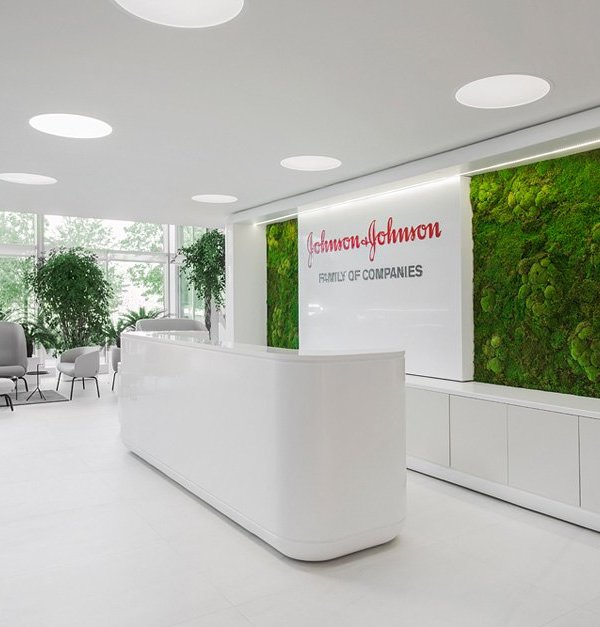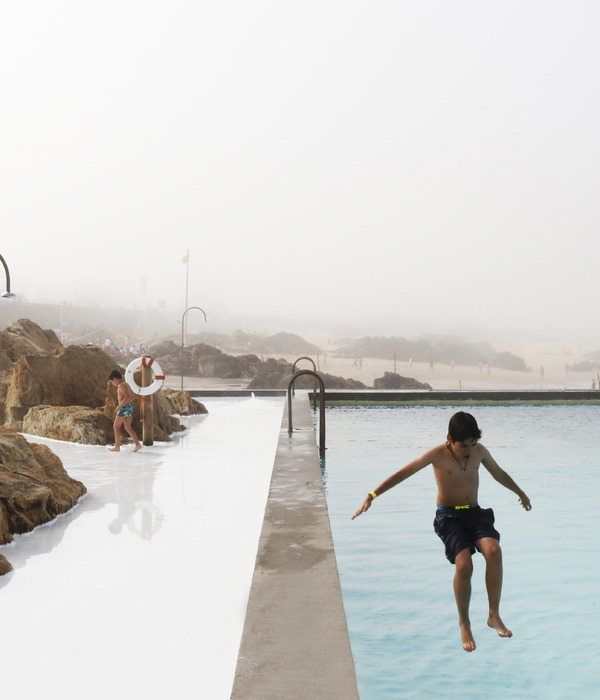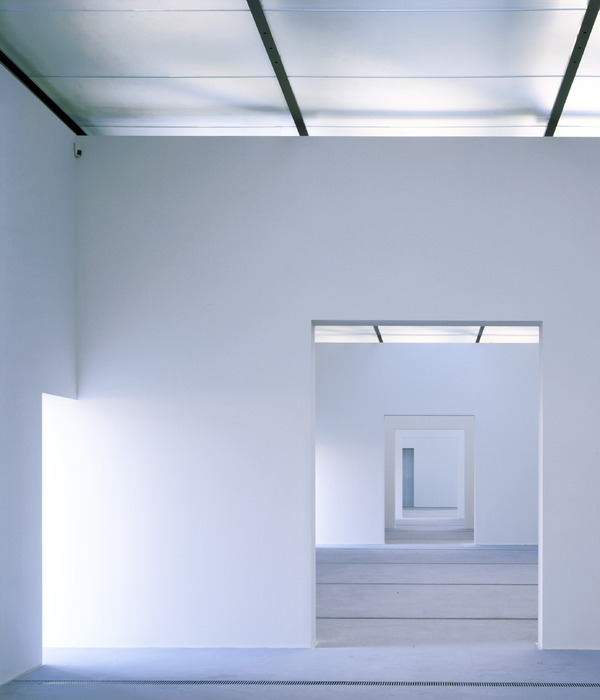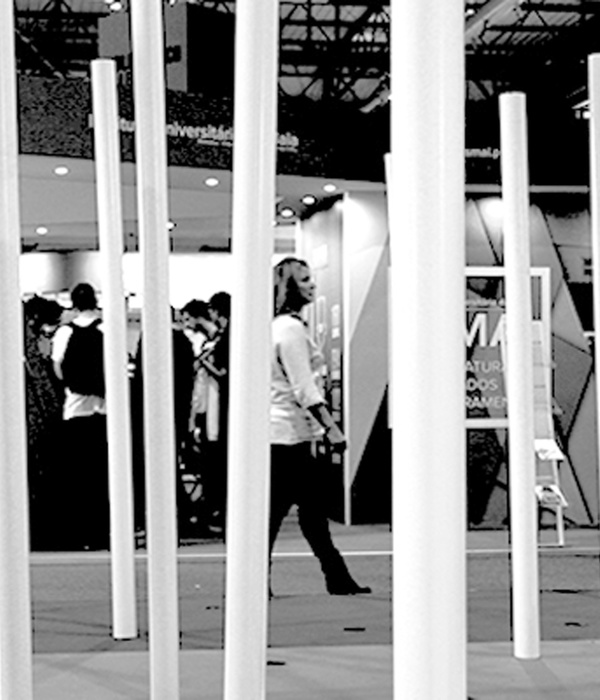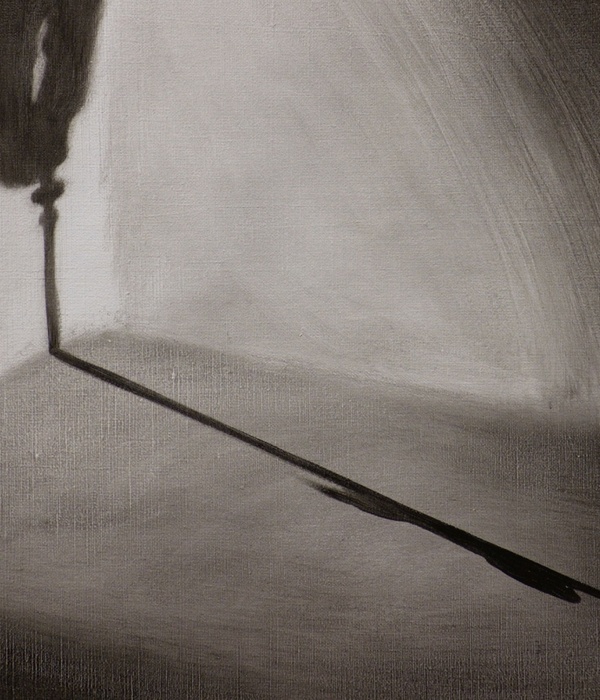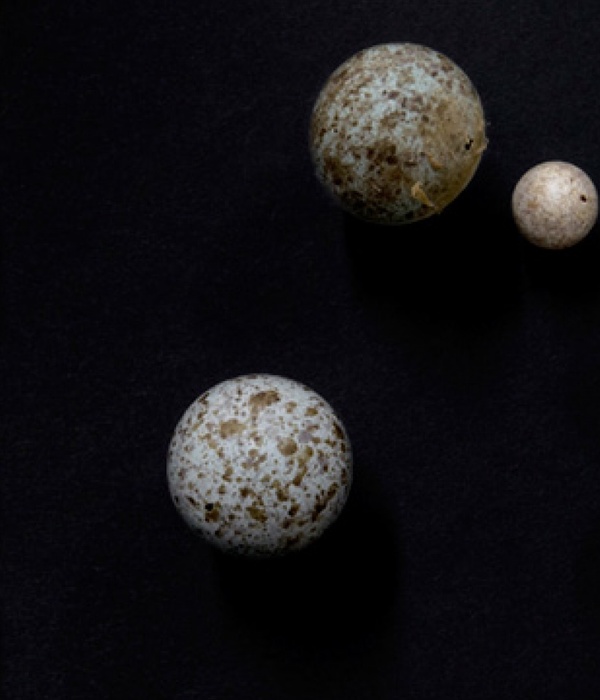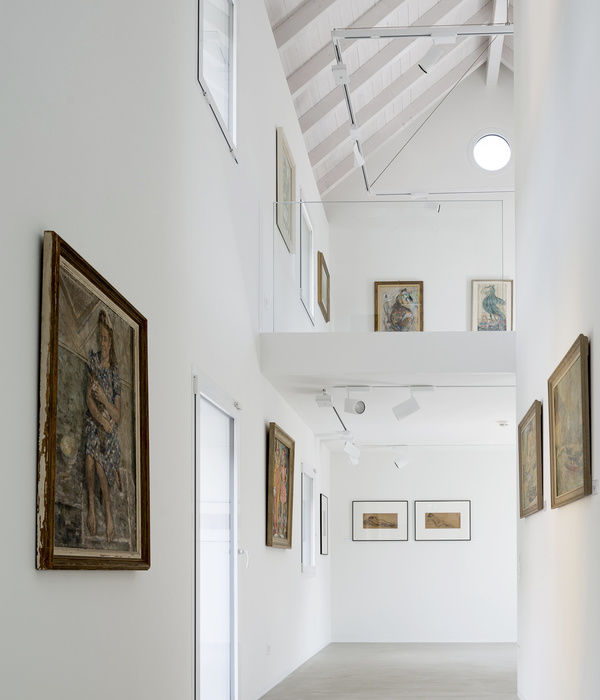如恩个展《无尽之行》以时间连续性与历史记忆为题,系统梳理了如恩在建筑实践中的重要时刻。展览分为六个章节,由“反思型怀旧”为起点,途经“步移景异”、“栖居”、“空间诗学”、“在地重铸”,最后抵达“未来遗迹”,由此呈现如恩多年来对于建筑思考的不断演变。
In a comprehensive manner, Neri&Hu: Works in Permanent Evolution presents the practice’s architectural works in six main categories: Reflective Nostalgia, Nomadic Voyeurism, Dwelling, Inhabitable Strata, Recasting Vernacular, and Future Artifact.
▼活动海报,post for the exhibition©Neri&Hu Design and Research Office
展览对全球背景下人类面临的一系列问题提出反思,同时也阐释了如恩自己的回答:建筑师尤其需要重视历史,保持对于建筑可适性再利用的调查思考;通过借景、构造、截面等视角重新想象建筑的可读性;以建筑为载体建立起与在地文化的连接,保留集体记忆与历史碎片。
Seen as a spectrum, starting with Reflective Nostalgia and culminating with Future Artifact, the exhibition starts and closes on themes of temporal continuity and history. The exhibition examines a series of contemporary issues in various global contexts and aims to shed light on how the firm grounds its work — by maintaining an intellectual inquiry into adaptive reuse and the role of history, reimagining spatial legibility associated with voyeurism, tectonics and the use of poché, searching for a connection back to the vernacular, and the role of collective memory and fragments.
▼开幕现场,0pening ©Neri&Hu Design and Research Office
《无尽之行》中的建筑模型生动立体地展现了如恩的落成项目、在建项目以及竞赛方案,许多为首次公开展示。在时间的无尽变化中,如恩试图找到介于建筑、文化、社会等不同元素之间的平衡对话,亦在不断演变的建筑实践中,寻找向内反思自省的力量。
The exhibition showcases built, unbuilt and speculative work through models, many of which have never been shown before. Seen as a dialogue between multiple factors in continual flux, the exhibition aims to distill and capture a moment in time of Neri&Hu’s evolution.
展览现场,the exhibition scene©Neri&Hu Design and Research Office
01 反思型怀旧
REFLECTIVE NOSTALGIA
如恩的许多设计来源于“反思型怀旧”这个概念。它停留在人类渴望和归属的暧昧上,没有回避现代的矛盾。相比深陷过去,“反思型怀旧”提供了面对文化遗产、集体记忆、居无定所以及城市更新等问题的解决手段。这一章节所展示的建筑模型,表露出新与旧、平滑与纹理、精致与原始之间的微妙平衡。
Reflective nostalgia “dwells on the ambivalences of human longing and belonging and does not shy away from the contradictions of modernity.” Many of Neri&Hu’s projects offers a productive means to engage with issues of heritage, collective memory, displacement and urban renewal. In the works presented in this chapter, one can sense the delicate balance between the contrasts of new and old, smooth and textured, refined and raw.
▼展览入口,the entrance©Neri&Hu Design and Research Office
▼模型展示,exhibition of the model©Neri&Hu Design and Research Office
02 步移景异
NOMADIC VOYEURISM
如恩从中国园林中频繁出现的“借景”概念获取新颖的视角,同时它也更新了如恩对于固有边界的认知,挑战了视觉深度、规模、边界等源于西方的传统视觉观念。身处“步移景异”,不妨想象游走于传统园林。原本零散的片段随着目光移动拼凑成一个整体,逐渐揭示出“从碎片到整体的关系”。
This chapter captures how the technique of “jiejing” (borrowed scenery), frequently found in Chinese gardens, offers novel ways of seeing that challenge our perceptions of fixed boundaries. Borrowed views defy accepted norms of viewing and exact visual transgressions that manipulate spatial depth and the perception of scale and distance. These projects all exhibit part-to-whole relationships between a collective of fragments meant to be pieced together by the roving eye of the nomadic voyeur.
▼展览揭示出“从碎片到整体的关系”showing relationships between a collective of fragments meant to be pieced together ©Neri&Hu Design and Research Office
03 栖居DWELLING
家和“在家”的状态是一种心理建构,它由对栖居、隐私、亲密关系以及安全感的主观感知组成。居所承载着我们日常生活的印记,岁月流逝,它们亦充当起生活堆积的容器。除此之外,居所体现了我们的价值观,显露出内心深处最亲密的生存感知和个人依恋。
在德国哲学家海德格尔(Martin Heidegger)看来,“只有在拥有生存能力后,我们才能建造;居所是人类本能的生理表达,意图在世界上寻找到属于自己的根源”。
Home and being “at home” are psychological constructs shaped by subjective perceptions of shelter, privacy, intimacy and sense of security. Dwellings bear the markings of our daily rituals of inhabitation and over time they serve as vessels for the accumulated artifacts of our everyday lives. Beyond serving as container and backdrop for life, dwellings are expressions of our values drawing from our most intimate planes of existence and personal attachments. According to Heidegger, we build only after we are capable of dwelling; dwellings are the physical manifestations of our impulse to find rootedness in the world.
▼探讨家和“在家”的状态,discussing home and being “at home”©Neri&Hu Design and Research Office
04空间诗学
INHABITABLE STRATA
The dichotomies of architecture versus interior, outside versus inside are binary relationships that Neri&Hu has been challenging through practice. These tropes, as Gaston Bachelard eloquently described merely reduce human experience to a geometrism that falls short of representing the full spectrum of inhabitation. The desire to embrace conflicting polarities stems from Neri&Hu’s complex attitude towards “objecthood”. The impulse after establishing formal legibility in is to interrogate the form from the interior.
▼对空间诗学的思考,study on inhabitable strata©Neri&Hu Design and Research Office
05在地重铸
RECASTING VERNACULAR
:“在地建筑”帮助我们建立起项目与当地的历史背景、文化传承与特定地点的关联。近年来,如恩细致研究在地建筑的材料和筑造方法。既不会摈弃过去的形式,也不会直接翻译过去的元素,而是以当代视角对它们加以重新诠释。
The vernacular typologies in China are critical in informing how Neri&Hu links new projects into a broader historical context, local lineage and specific site. Beyond typology, Neri&Hu’s recent investigations have also begun to look closer at the vernacular construction materials and methods. Similar as with the approach to typology, Neri&Hu does not seek to transplant outdated modalities, or take literal translations of a bygone element, rather to interpret them anew.
▼细部,details©Neri&Hu Design and Research Office
06 未来遗迹
FUTURE ARTIFACT
奥尔多·罗西(Aldo Rossi)将城市视为生命实体,不断改变、积累它的意识和记忆。建筑的价值在于城市文物的形式,即使它们不再使用,却仍然在构筑城市。在此,如恩提出的问题很简单:如何创建一种“未来遗迹”,使其对世世代代都存有意义?这一章节阐释了如恩如何转换不同的语境观念,如何看待纪念碑式的建筑,以及破坏和演变的二元性。
Aldo Rossi conceived the city as a living entity, constantly transforming and accumulating its own consciousness and memory. Architecture’s value resides within the forms of urban artifacts, which continue to structure the city even after they have shed their functions. The question Neri&Hu raises here is simple: how do we create built artifacts that can retain a meaningful presence for generations to come? The works in this chapter present how Neri&Hu deals with notions of context, the role of the monument, and the duality of destruction and evolution.
▼出版作品展示,published works©Neri&Hu Design and Research Office
如恩:无尽之行
地点:上海
年份:2021
类型:展览
特别鸣谢:同济大学建筑与城市规划学院李翔宁院长,刘刊老师,温华婧老师及同济大学志愿者团队
主持建筑师:郭锡恩,胡如珊
展览团队:张堇盈,谢宜加,鲁俊希,郭鹏,黄惠子,洪明月,郭歆洁,施懿轩,王钰璇,Nicolas Fardet
展览支持:雅法塑业(上海)有限公司,上海邑轩模型设计制作公司
Neri&Hu: Works in Permanent Evolution
Location: ShanghaiDate: 2021Program: Exhibition
Special thanks: Dean Li Xiangning, Liu Kan, Wen Huajing and volunteers from College of Architecture and Urban Planning, Tongji University
Partners-in-charge: Lyndon Neri, Rossana Hu
Exhibition team: Christine Chang, Lina Lee, Junxi Lu, Guo Peng, July Huang, Luna Hong, Jeremiah Neri, Vivienne Shi, Yuxuan Wang, Nicolas Fardet
Acknowledgement: JAFFA Plastics (Shanghai) Co., Ltd, Shanghai Yixuan Model Design & Production Co.
{{item.text_origin}}

